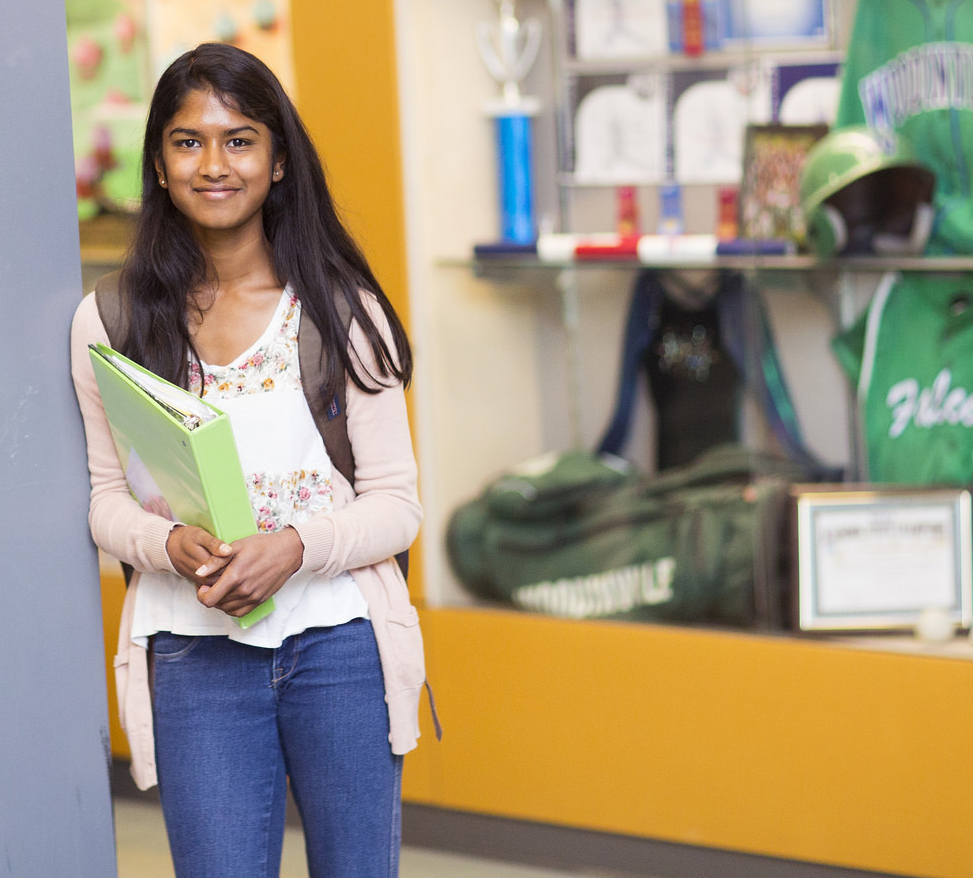
As the head of Microsoft Philanthropies and the first female attorney hired at Microsoft, I’ve experienced firsthand the amazing potential for change when girls and women are empowered to create and innovate.
Take Aishwarya Manoharan, a student of computer science and informatics at the University of Washington. When Aishwarya was growing up, she didn’t know exactly what she wanted to do, but she was fairly certain her future wouldn’t revolve around computers. It’s no wonder: She thought that working with computers was for men, and computer science meant sitting in front of a laptop typing code by yourself – not exactly an appealing prospect for this outgoing young woman, who also plays tennis and loves to bake.

But when Aishwarya took the Microsoft TEALS AP Computer Science class her junior year of high school, she realized her image of programming was wrong when she saw other girls getting excited about computer science. That was when Aishwarya met her volunteer teachers, including Arti Gupta, a software development engineer at Microsoft, who became Aishwarya’s mentor. The confidence Aishwarya gained from TEALS (Technology Education and Literacy in Schools), and especially Arti’s support, has helped Aishwarya when she feels like she doesn’t belong in her university classes that are overwhelmingly male and Caucasian. She says, “Remembering Ms. Gupta’s belief in me reminds me that I’m in the right place.”
Computing and technology hold the promise of opportunity for so many girls. And, while progress has been made to get more girls introduced, supported and successful in computer science from kindergarten to career, we still have work to do. The path to a computing-related career needs to be inclusive and provide the right support at the right times, so that girls and women feel encouraged and welcomed. Collectively, our companies, products and innovations will suffer without the perspective that girls and women bring – technologies will inevitably emerge with unintentional bias and limited insight into the diversity of people who will use and depend on them.
Today, girls and students of color represent 65 percent of the entire U.S. population, yet only 28 percent of high school students who take the AP Computer Science exam are girls, and only 22 percent are students of color. The reasons girls lose interest in STEM (science, technology, engineering and math) and computer science are many: from a lack of role models and support, to a general misperception of what STEM careers look like in the real world, and how these skills can help unlock their wildest ambitions. Without more female influence in STEM fields, we risk having hundreds of thousands of jobs left unfilled, not to mention half of our talent left untapped.
This is why it is urgent that computer science education be more inclusive. We need to show girls, and all students from diverse backgrounds, that they, too, can embrace the art and creativity of computers and be the builders, inventors, problem-solvers and computer scientists solving tomorrow’s challenges. This requires us all to take action:
- Make computer science count. This policy is the single biggest way to help computer science reach more girls. Since 2013, when Microsoft began its work with Code.org’s Advocacy Coalition, the number of U.S. states that have made computer science count toward required credits in math or science for high school graduation has grown from nine to 45. Montana became the latest state this week.
- Provide access to female role models with diverse backgrounds. Many female Microsoft employees volunteer for our DigiGirlz program, designed to introduce girls to the career opportunities available in technology fields. To date, we have offered more than 54,000 girls the opportunity to explore and become active thinkers, creators and doers in STEM.
- Focus on access and inclusion. We do this by partnering with local nonprofits to bring culturally relevant approaches to computer science to local communities. In the U.S., more than 1,400 tech professionals volunteer with TEALS in schools, serving 16,000 students, 33 percent of whom are young women. Abroad, groups like Shared Path in Australia brings tailored digital skills training to indigenous Australians, and Laboratoria in Latin America, a female-led organization which has trained over 1,000 young women to become web developers and designers by mimicking actual work scenarios.
Today on International Women’s Day, join us by taking action and help inspire the next generation of girls to stay in STEM and #MakeWhatsNext:
-
-
- Use your technology skills for good. Volunteer for TEALS, Black Girls Code or Girls Who Code if you have CS experience. Or host an Hour of Code at your local school or nonprofit where no coding experience is needed.
- Support nonprofit partners who are focused explicitly on closing the gaps for girls, like Anita Borg Institute, Black Girls Code, Girls Who Code and NCWIT.
- Nominate a teacher for a computer science professional development, Microsoft-supported scholarship through Code.org.
- Provide girls the supports they need to succeed. Our Closing the STEM Gap Action Guide, created in partnership with experts in the field, provides great insight and recommendations on what each of us can do to support girls in their STEM journey. If you are an educator, take a look at this curated set of resources available to help you close the gap.
By taking these steps and joining in collective action, we can create a more inclusive computer science pipeline for women, provide greater access to economic opportunities for people of all backgrounds, and drive more innovation, starting today.
-
